Michael Sandborn
Anvil: An integration of artificial intelligence, sampling techniques, and a combined CAD-CFD tool
Jun 24, 2024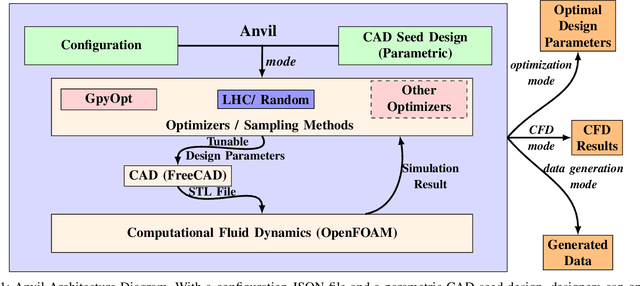
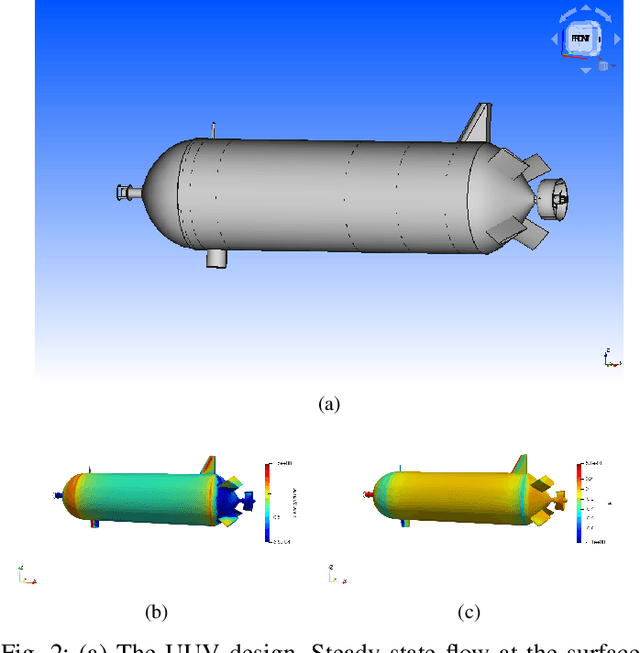
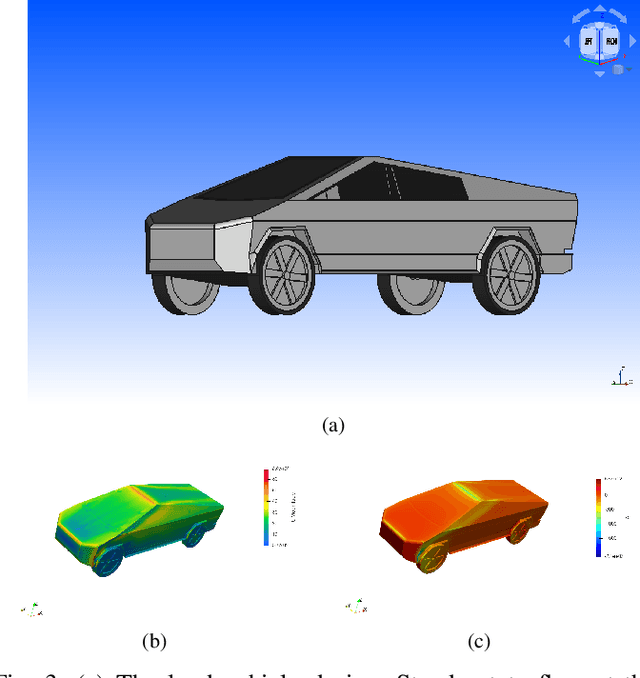
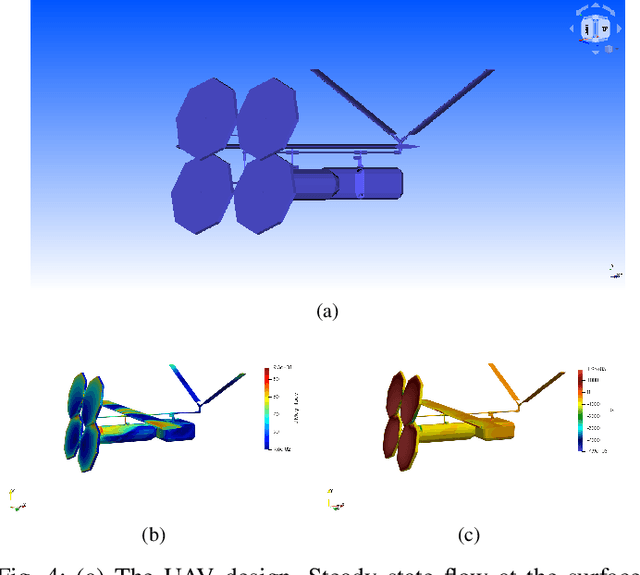
Abstract:In this work, we introduce an open-source integrated CAD-CFD tool, Anvil, which combines FreeCAD for CAD modeling and OpenFOAM for CFD analysis, along with an AI-based optimization method (Bayesian optimization) and other sampling algorithms. Anvil serves as a scientific machine learning tool for shape optimization in three modes: data generation, CFD evaluation, and shape optimization. In data generation mode, it automatically runs CFD evaluations and generates data for training a surrogate model. In optimization mode, it searches for the optimal design under given requirements and optimization metrics. In CFD mode, a single CAD file can be evaluated with a single OpenFOAM run. To use Anvil, experimenters provide a JSON configuration file and a parametric CAD seed design. Anvil can be used to study solid-fluid dynamics for any subsonic flow conditions and has been demonstrated in various simulation and optimization use cases. The open-source code for the tool, installation process, artifacts (such as CAD seed designs and example STL models), experimentation results, and detailed documentation can be found at \url{https://github.com/symbench/Anvil}.
Semantic Compression With Large Language Models
Apr 25, 2023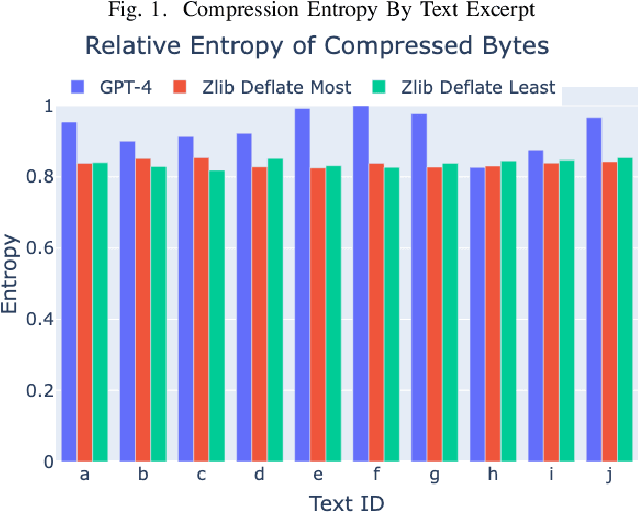
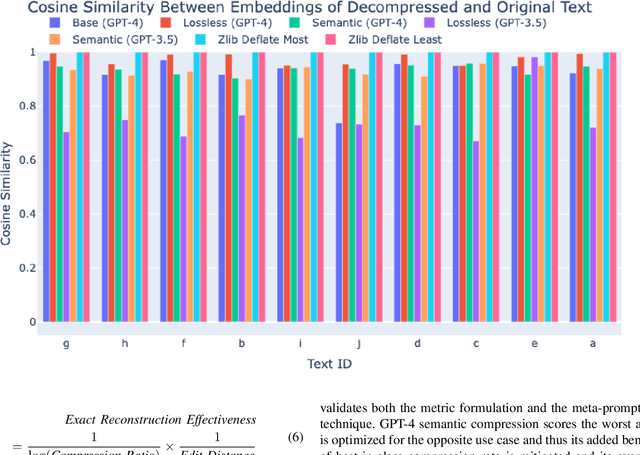
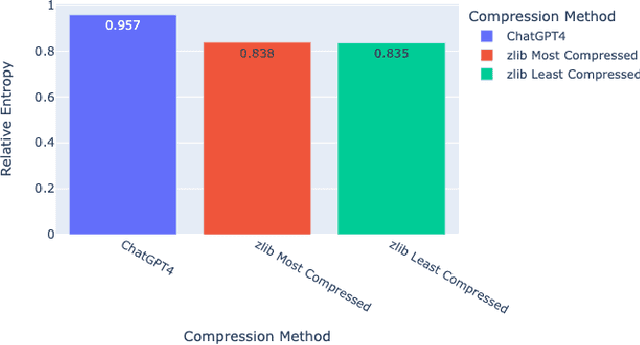
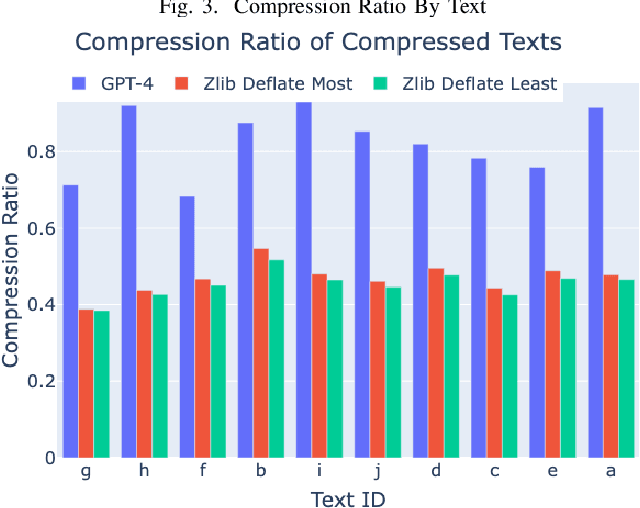
Abstract:The rise of large language models (LLMs) is revolutionizing information retrieval, question answering, summarization, and code generation tasks. However, in addition to confidently presenting factually inaccurate information at times (known as "hallucinations"), LLMs are also inherently limited by the number of input and output tokens that can be processed at once, making them potentially less effective on tasks that require processing a large set or continuous stream of information. A common approach to reducing the size of data is through lossless or lossy compression. Yet, in some cases it may not be strictly necessary to perfectly recover every detail from the original data, as long as a requisite level of semantic precision or intent is conveyed. This paper presents three contributions to research on LLMs. First, we present the results from experiments exploring the viability of approximate compression using LLMs, focusing specifically on GPT-3.5 and GPT-4 via ChatGPT interfaces. Second, we investigate and quantify the capability of LLMs to compress text and code, as well as to recall and manipulate compressed representations of prompts. Third, we present two novel metrics -- Exact Reconstructive Effectiveness (ERE) and Semantic Reconstruction Effectiveness (SRE) -- that quantify the level of preserved intent between text compressed and decompressed by the LLMs we studied. Our initial results indicate that GPT-4 can effectively compress and reconstruct text while preserving the semantic essence of the original text, providing a path to leverage $\sim$5$\times$ more tokens than present limits allow.
A Prompt Pattern Catalog to Enhance Prompt Engineering with ChatGPT
Feb 21, 2023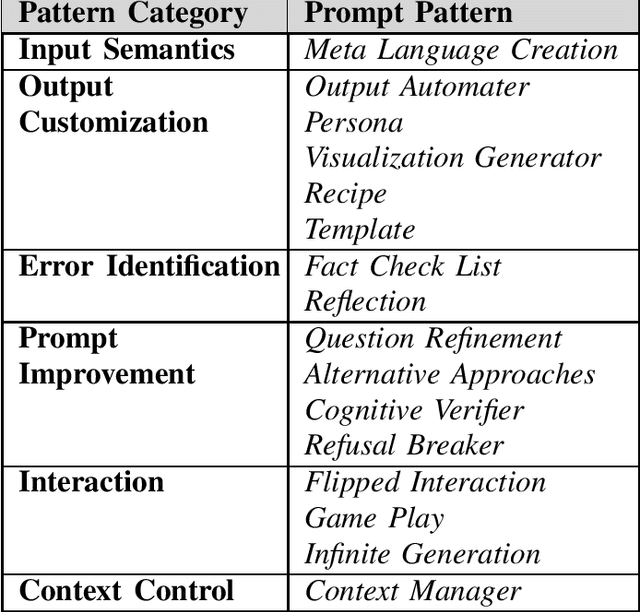
Abstract:Prompt engineering is an increasingly important skill set needed to converse effectively with large language models (LLMs), such as ChatGPT. Prompts are instructions given to an LLM to enforce rules, automate processes, and ensure specific qualities (and quantities) of generated output. Prompts are also a form of programming that can customize the outputs and interactions with an LLM. This paper describes a catalog of prompt engineering techniques presented in pattern form that have been applied to solve common problems when conversing with LLMs. Prompt patterns are a knowledge transfer method analogous to software patterns since they provide reusable solutions to common problems faced in a particular context, i.e., output generation and interaction when working with LLMs. This paper provides the following contributions to research on prompt engineering that apply LLMs to automate software development tasks. First, it provides a framework for documenting patterns for structuring prompts to solve a range of problems so that they can be adapted to different domains. Second, it presents a catalog of patterns that have been applied successfully to improve the outputs of LLM conversations. Third, it explains how prompts can be built from multiple patterns and illustrates prompt patterns that benefit from combination with other prompt patterns.
 Add to Chrome
Add to Chrome Add to Firefox
Add to Firefox Add to Edge
Add to Edge